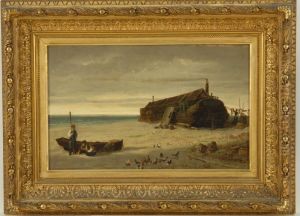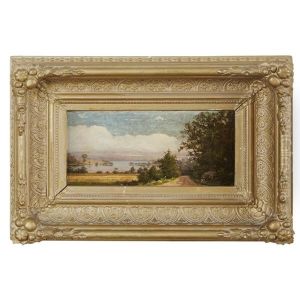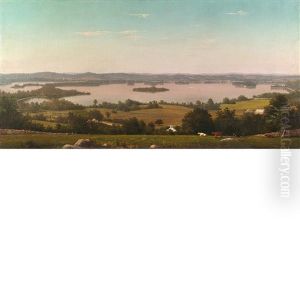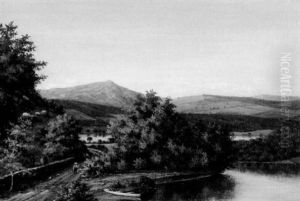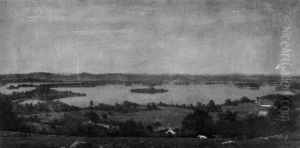George Fisher Daniels Paintings
George Fisher Daniels was an American artist known for his landscape paintings. Born on May 23, 1820, in New Ipswich, New Hampshire, Daniels grew up in a period of American history that saw the rise of the Hudson River School, a movement that would greatly influence his work. Although not as widely recognized as the leading figures of this movement, such as Thomas Cole or Frederic Edwin Church, Daniels contributed to the American art scene with his depictions of the New England landscape.
Daniels' early life and training are not extensively documented, but it is believed that he was largely self-taught, with possible informal mentorship from other local artists. During the mid-19th century, there was a burgeoning appreciation for the natural beauty of the American landscape, and Daniels' works captured this sentiment, often focusing on the serene and pastoral qualities of the countryside.
Throughout his career, George Fisher Daniels remained active in the New England area, with a particular focus on painting the landscapes of New Hampshire and Vermont. His paintings often depicted the changing seasons, from the lush greenery of summer to the vibrant colors of autumn, and the pristine snow-covered scenes of winter. Daniels' ability to capture the subtle nuances of light and atmosphere in these settings earned him a respectable following.
Despite the regional appreciation for his work, Daniels did not gain the same level of national fame as some of his contemporaries. Nonetheless, his paintings were featured in exhibitions, and he managed to sustain himself through his art. Daniels was also involved in his local community, where he was known as a respected figure.
George Fisher Daniels passed away on September 12, 1897, in Keene, New Hampshire. While he may not have achieved widespread fame during his lifetime, his work remains a testament to the beauty of the American Northeast and offers valuable insights into the regional artistic expressions of the 19th century. His paintings can still be found in local museums and in the collections of those who appreciate the quiet beauty of New England's natural landscapes.
